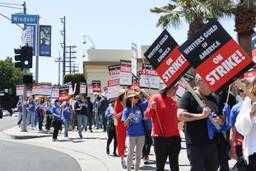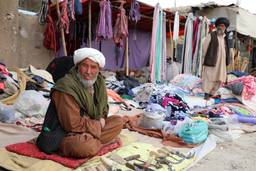
This originally appeared on Common Dreams.
Call it the ‘Year of the Billionaire.’
In 2017, a new billionaire was created every two days and while 82 percent of all wealth created went to the top 1 percent of the world’s richest while zero percent — absolutely nothing — went to the poorest half of the global population.
That troubling information is included in Oxfam’s latest report on global inequality — titled Reward Work, Not Wealth—released Monday. In addition to the above, the report details how skyrocketing wealth growth among the already rich coupled with stagnant wages and persistent poverty among the lowest economic rungs of society means that just 42 individuals now hold as much wealth as the 3.7 billion poorest people on the planet.
“The billionaire boom is not a sign of a thriving economy but a symptom of a failing economic system,” Winnie Byanyima, Oxfam’s executive director of Oxfam International. “The people who make our clothes, assemble our phones and grow our food are being exploited to ensure a steady supply of cheap goods, and swell the profits of corporations and billionaire investors.”
Among the report’s key findings:
- Billionaire wealth has risen by an annual average of 13 percent since 2010 – six times faster than the wages of ordinary workers, which have risen by a yearly average of just 2 percent. The number of billionaires rose at an unprecedented rate of one every two days between March 2016 and March 2017.
- It takes just four days for a CEO from one of the top five global fashion brands to earn what a Bangladeshi garment worker will earn in her lifetime. In the US, it takes slightly over one working day for a CEO to earn what an ordinary worker makes in a year.
- It would cost $2.2 billion a year to increase the wages of all 2.5 million Vietnamese garment workers to a living wage. This is about a third of the amount paid out to wealthy shareholders by the top 5 companies in the garment sector in 2016.
- Dangerous, poorly paid work for the many is supporting extreme wealth for the few. Women are in the worst work, and almost all the super-rich, nine out of ten, are men.
The report comes just as the world’s economic and political elite are set to open the World Economic Forum, held annually in Davos, Switzerland. And why the global elite argue the summit’s focus is addressing the world’s most pressing problems, Oxfam found that the amount of new wealth which went to the world’s top one percent in 2017 was roughly $762 billion — a figure large enough, the group points out, to end extreme global poverty seven times over.
What the report ultimately exposes, Mark Goldring, Oxfam GB chief executive, told the Guardian, is a “system that is failing the millions of hardworking people on poverty wages who make our clothes and grow our food.”
“For work to be a genuine route out of poverty we need to ensure that ordinary workers receive a living wage and can insist on decent conditions, and that women are not discriminated against,” he added. “If that means less for the already wealthy then that is a price that we — and they — should be willing to pay.”
Not just cataloging and lamenting the metrics of inequality, the new report also puts forth a number of policy solutions that should be embraced by people and governments worldwide to reduce levels of inequality and lift billions of people out of extreme poverty. They include:
- Limit returns to shareholders and top executives, and ensure all workers receive a minimum ‘living’ wage that would enable them to have a decent quality of life. For example, in Nigeria, the legal minimum wage would need to be tripled to ensure decent living standards.
- Eliminate the gender pay gap and protect the rights of women workers. At current rates of change, it will take 217 years to close the gap in pay and employment opportunities between women and men.
- Ensure the wealthy pay their fair share of tax through higher taxes and a crackdown on tax avoidance, and increase spending on public services such as healthcare and education. Oxfam estimates a global tax of 1.5 percent on billionaires’ wealth could pay for every child to go to school.
Though Oxfam has been calculating global inequality on an annueal basis for more than a decade, the anti-poverty group notes that this year’s report used new data from Credit Suisse and a separate kind of model. Specifically, Oxfam noted, the fact that the world’s 42 richest billionaires have as much wealth as the poorest bottom half “cannot be compared to figures from previous years - including the 2016/17 statistic that eight men owned the same wealth as half the world - because it is based on an updated and expanded data set published by Credit Suisse in November 2017. When Oxfam recalculated last year’s figures using the latest data we found that 61 people owned the same wealth as half the world in 2016 – and not eight.”






